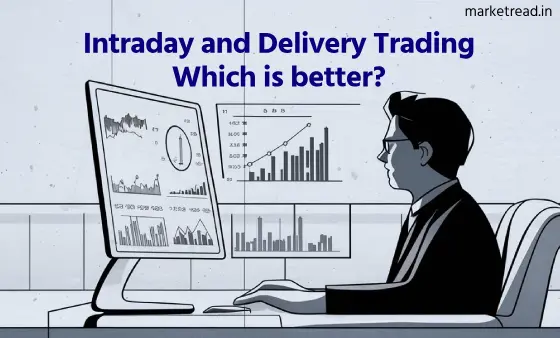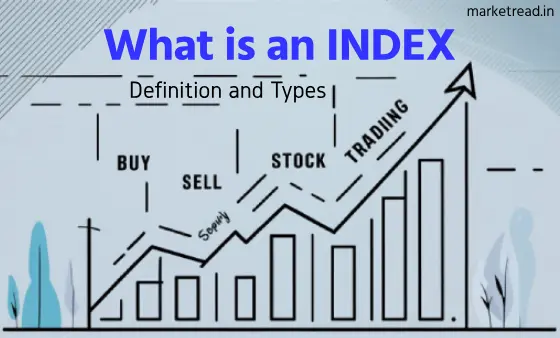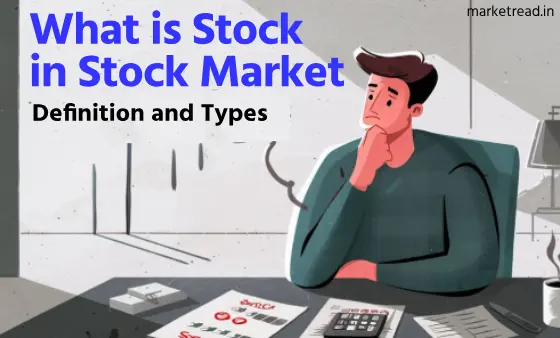Understanding Intraday and Delivery Trading
Here, we are going to understand Intraday and delivery trading from the Indian Market Point of view. But the whole concept remains the same everywhere in the trading world. There are many different ways available for trading in the stock market! One is Intraday trading and another one is Delivery trading. Both involve buying and selling shares, but there are big differences. This article will explain these differences in simple terms, so you can pick the method that suits your investment goals best.
Intraday Trading
First of all Intraday trading is also known as “Day Trading”. In intraday trading, you can buy or sell stocks, options, or financial instruments on the same day. This is a part of a trader’s strategy. Now, trading in this manner creates two possibilities: you can sell your trade at a profit, or you may have to sell at a loss.
This trading strategy is governed by specific timeframes set by the stock exchange, meaning buying or selling shares and other financial instruments should occur within this designated time.
According to Indian time, the stock market operates from 9:00 AM to 4:00 PM. However, you cannot place any trades before 9:15 AM or execute any trades after 3:30 PM.
One of the key features of intraday trading is that traders do not hold any positions overnight. All positions are closed before the market closes for the day. This means that intraday traders do not take delivery of the stocks they buy; instead, they settle the trades in cash. Intraday traders rely heavily on technical analysis, using charts, indicators, and patterns to identify potential entry and exit points.
Due to the short-term nature of intraday trading, it requires active monitoring of the market throughout the trading day. Traders need to stay updated with market news, monitor price movements, and execute trades swiftly. Intraday trading can be highly profitable, but it also carries a higher level of risk and requires a certain level of skill and experience.
Here’s an example to illustrate how it works:
For example, suppose you estimate based on your experience that the stock of ABC Company can fall from ₹100 to ₹90. Then you sell 10 stocks of ABC Company at ₹100 each, which means you are shorting it. This means your stockbroker lends you 10 stocks from their total available stocks. And when the price of that stock falls according to your estimate from ₹100 to ₹90, you buy it back at ₹90 and return it to the stockbroker. Here you earned a profit of ₹10 for each stock sold, which adds up to ₹100 total profit for all 10 stocks sold. Your broker may charge some commission, but the rest of the profit is yours.
Why do people do intraday trading?
- People trade intraday for several reasons. Intraday trading, also known as day trading, means executing and exiting transactions within the same day. Its primary objective is for traders to capitalize on short-term price movements, observe price fluctuations, and trade accordingly.
- One advantage of intraday trading is that traders get leverage. Leverage means your broker provides you with a margin of capital up to 5 times or 10 times the deposited amount in your trading account for margin trading.
- However, the use of such margin involves various factors determined by the broker. For instance, if you have deposited ₹1000 in your trading account and the broker offers you leverage up to 10 times, it means you can trade up to ₹10,000 worth of shares in the stock market. However, using such a margin involves risk. If you are not aware of them, it’s advisable not to use margin, as it can lead to your trading account going into negative on some days.
One condition of using margin is that traders need to settle the trade on the same day they use margin, even if the trade results in a loss.
Delivery Trading
Delivery trading, on the other hand, is a more traditional approach to investing in the stock market. In this method, investors buy stocks to hold them for an extended period, typically weeks, months, or even years. Delivery trading is based on the belief that the value of the stock will appreciate over time, allowing investors to profit from the long-term growth of the company.
When investors engage in delivery trading, they take actual delivery of the stocks they purchase. The stocks are credited to their demat accounts, and they become the rightful owners of the shares. Unlike intraday trading, delivery trading does not involve settling trades in cash; instead, the stocks are transferred from the seller’s demat account to the buyer’s demat account.
Delivery trading is often considered a less speculative and more conservative approach compared to intraday trading. It allows investors to benefit from the overall growth of the stock market and the economy. Investors who engage in delivery trading typically focus on fundamental analysis, evaluating the financial health, performance, and prospects of the company before making investment decisions.
Key Differences Intraday vs. Delivery Trading
| Feature | Intraday Trading | Delivery Trading |
|---|---|---|
| Time Horizon | Same Day | Longer Than One Day |
| Settlement | Cash | Delivery of Shares |
| Risk | Higher | Lower |
| Reward | Potentially Higher Returns | Potentially Lower Returns (but with long-term growth) |
| Approach | Technical Analysis (chart patterns, indicators) | Fundamental Analysis (company financials, industry outlook) |
| Monitoring | Constant Monitoring Required | Less Frequent Monitoring Needed |
Conclusion
Deciding whether to engage in intraday or delivery trading depends on various factors, including your risk tolerance, time availability, and investment goals. Intraday trading can be exciting and potentially lucrative for those who are willing to actively monitor the market and take quick trading decisions. On the other hand, delivery trading offers a more patient and long-term approach, suitable for investors looking to benefit from the growth of specific companies or the overall market.
It is important to note that both intraday and delivery trading requires knowledge, skills, and experience. It is advisable to educate yourself, learn from experienced traders, and practice with virtual trading platforms before committing real capital. Additionally, consulting with a financial advisor can provide valuable insights and guidance in choosing the right trading approach based on your individual circumstances.
FAQs
Why do people prefer intraday trading?
In intraday trading where traders get leverage or margin from the broker, means broker provides you with a margin of capital up to 5 times or 10 times in your trading account for margin trading.
Is intraday very risky?
Intraday trading is known as a highly profitable as well as a highly risky task. trader needs to actively monitor the market and make quick trading decisions.




Hiya! I know this is kinda off topic but I’d figured I’d ask. Would you be interested in trading links or maybe guest writing a blog post or vice-versa? My website addresses a lot of the same topics as yours and I believe we could greatly benefit from each other. If you’re interested feel free to shoot me an e-mail. I look forward to hearing from you! Superb blog by the way!
You actually make it seem so easy with your presentation but I in finding this matter to be really one thing that I think I’d by no means understand. It seems too complicated and extremely broad for me. I am having a look ahead for your subsequent put up, I¦ll attempt to get the grasp of it!